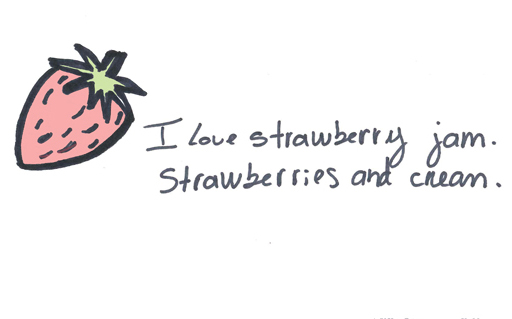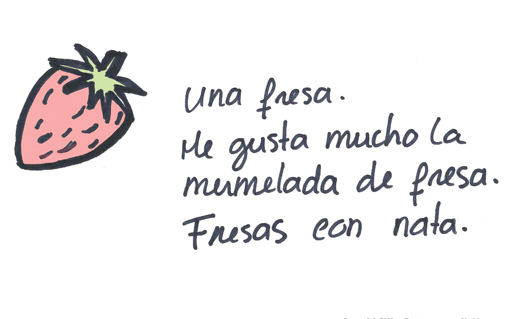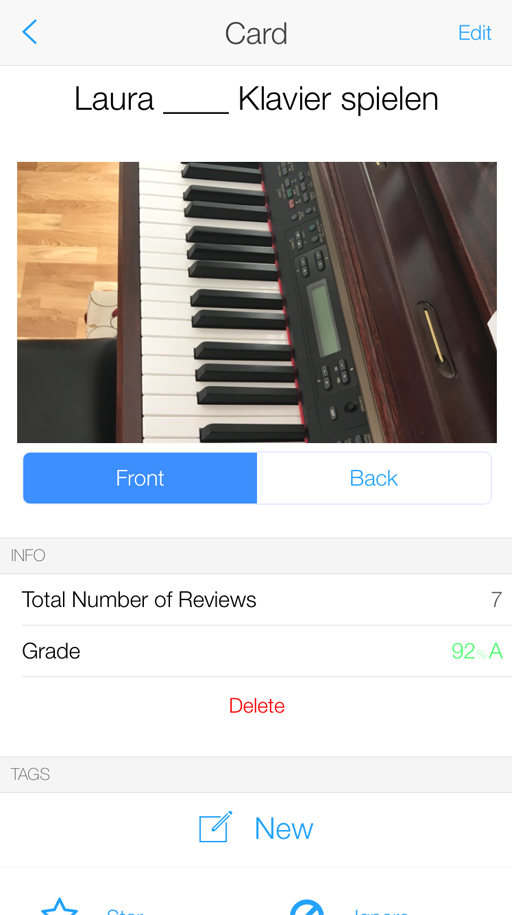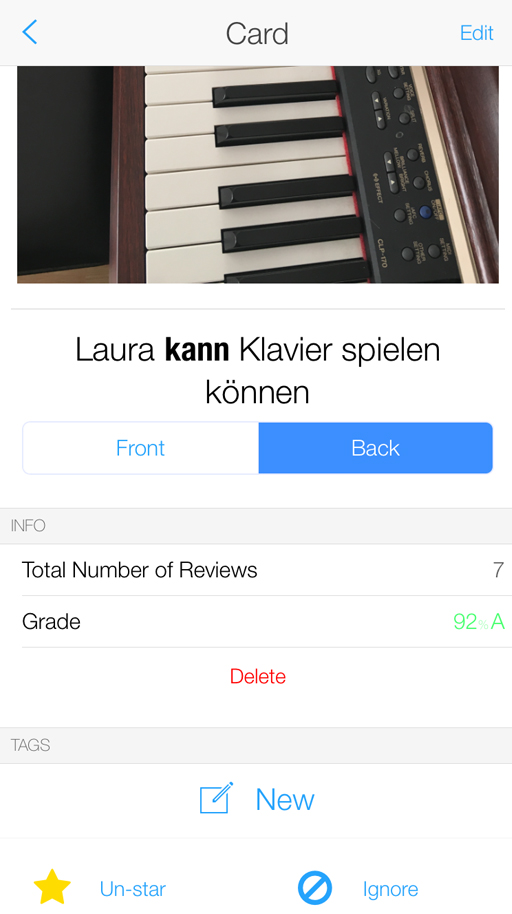6.2 Mnemonics
A second important encoding strategy is mnemonics. You probably learned some mnemonics at school. For instance, to learn the colours of the rainbow, you can remember the sentence: Richard Of York Gave Battle In Vain (red, orange, yellow, green, blue, indigo and violet), or to remember the order of the planets in our solar system, you can use the mnemonic: My Very Easy Method Just Speeds Up Naming Planets (the first one, closest to the Sun, is Mercury).
Although most people associate mnemonics with this sort of examples, mnemonics are indeed any sort of memory technique that helps retain information.
One useful mnemonic device is the use of imagery, and this can be very useful when learning new vocabulary.
Vocabulary cards or ‘flashcards’ are a useful way to learn vocabulary. They are cards that have the word you want to learn on one side and, usually, the translation of the word on the other. There are also flashcard apps you can use online, and you’ll review these in Week 8.
Instead of having the word you want to learn on one side and the translation on the other, you can use vocabulary cards that have the word you want to learn on one side, and a picture on the other. And although you can find lots of these already made, it seems that if you actually spend a bit of time and make them yourself, with images that are either meaningful to you, or that you look for yourself, you are more likely to remember them (Wyner, 2014).
So here, for instance, is a card I made to learn the verb können (can) in German.
The front of the card show a sentence with a gap (Laura …. play the piano) in it and a picture, and the back contains the whole sentence, and the infinitive of the verb. What makes this card particularly meaningful to me is that Laura is my daughter, and that the piano in the picture is Laura’s piano. All this helps to encode the German into my long-term memory, because the new information can latch onto lots of other meaningful items that are in my memory already.
You don’t have to create actual images in flashcards to link to words in order to remember them; you can also make visual or auditory associations in your mind. For instance, polyglot Benny Lewis gives the example of the word ‘Leute’ in German, which means people. I used to find this a very difficult word to remember, as it bears no resemblance to the English word or to the word for people in any of the other languages I speak. What Benny Lewis suggests is imagining a bunch of PEOPLE LOITERING (Lewis, 2016, p. 29) – once you have that image in your head, it is difficult to forget the word.
With a bit of practice and imagination, you can make up these links between words yourself – and they only have to be meaningful to you. For instance, the German word ‘einladen’ means ‘to invite’. To my mind it sounds a lot like the Spanish word ‘helado’, ice-cream, and so the first time I heard ‘einladen’ I immediately thought of the image on one of my German friends inviting me for an ice-cream (‘einladen’ me for an ‘helado’, so to speak), and the new verb was immediately, and indelibly imprinted in my mind.




